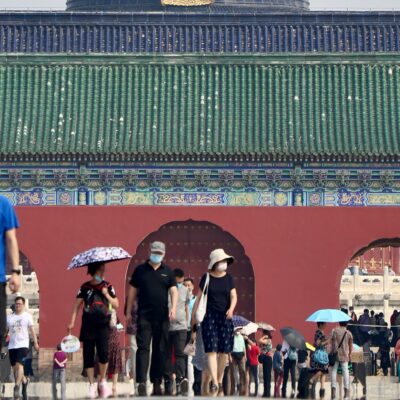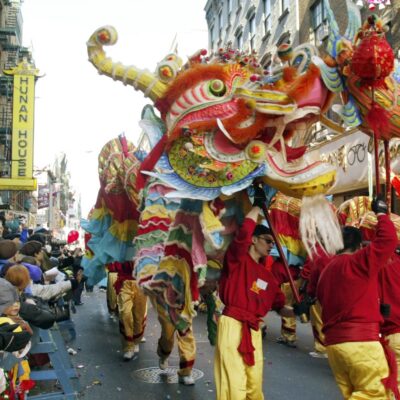The terrorist attacks on the US on September 11, 2001, shook the world but were of special importance to post-Soviet Central Asia: Kazakhstan, Kyrgyzstan, Tajikistan, Turkmenistan and Uzbekistan. Overnight, the region went from a relatively quiet spot on the periphery of the former Soviet empire to finding itself on the frontline in the new US-led Global War on Terror (GWOT). The Central Asian governments agreed to host US and allied military facilities, offered their airspace and logistical support for the campaign in Afghanistan, and cooperated on regional counter-terrorism and counter-narcotics efforts.
American engagement with the region prompted renewed strategic interest and new regional governance initiatives by Russia and China. Both initially publicly backed the US entry into the region for their own purposes—Russia envisioned itself as a high-profile partner to the US, while China took advantage of the GWOT to justify its crackdown on the Uyghurs of Xinjiang. However, both became concerned that the United States planned to maintain an enduring presence in the region under the pretext of democratising Afghanistan. In response, Moscow and Beijing established and expanded their own forms of regional governance: security organisations (such as the Collective Security Treaty Organization and Shanghai Cooperation Organization); economic blocs and initiatives (the Eurasian Economic Union and China’s Belt and Road Initiative); and new illiberal norms that sought to push back against Western notions of liberal democracy and civil society and justified mounting authoritarian rule and repressive practices under the pretext of avoiding ‘Color Revolutions.’
During this time of rising great power competition and the diversification of governance architectures, analysts and policymakers coined the term ‘multivectorism’ to refer to the Central Asian governments’ preference for maintaining productive relations with all great powers. Indeed, as I wrote in 2012 in my book Great Games, Local Rules, Central Asian governments themselves retained considerable agency in this new ‘great game,’ as they could accept patronage from multiple sources and play these external suitors off one another to boost their own domestic political standing and secure additional economic benefits.
In practice, the precise form of multivectorism depended greatly on the country involved and its own state-building strategy. The small country of Kyrgyzstan, for example, learned to leverage its geopolitical position to great effect. After agreeing to host a US military facility at the Manas International Airport (near its capital Bishkek) in December 2001, the government also allowed Russia to open a new airbase in 2003 in the nearby town of Kant. In the winter of 2009, then President Kurmanbek Bakiyev even initiated a ‘base bidding war’ between Washington and Moscow, as he promised then Russian President Dmitry Medvedev that he would close the US facility at the same time he was promised an emergency US$two-billion package of loans and investment by Russia. However, just weeks after receiving the first tranche of Russian assistance and announcing the base’s closure, Bakiyev negotiated a new five-year agreement with Washington that included an increased rental payment and the opportunities to profit from base-related fueling contracts.
Not all the Central Asian governments behaved in such a brazenly self-interested manner, but the general perception was that intensifying external interest from Washington, Moscow and Beijing—as well as other powers like the European Union, Turkey, India and Japan—afforded these governments considerable room to maneuver and a good deal of political autonomy.
But although multivectorism became widely accepted as a strategic goal, this capacity to pursue multiple partnerships and patrons was made possible by certain structural conditions. Most significantly, cooperation with the United States and NATO on security-related issues provided security assistance, economic benefits and the prestige with being coalition partners in the Afghanistan campaign. And it was this security cooperation that spurred Russia and China to accelerate and deepen their own regional initiatives.
Critically, however, this balance of external powers lasted for less than two decades. The US departed from its military base in Manas in 2014, the same year that the Ukraine conflict and Russia’s annexation of Crimea alarmed the Central Asian states, heightening concerns both about Russia’s possible new interventionist mindset and the possibility that a Ukraine-style street revolution might destabilise their countries. Around the same time, China also increased its engagement with the region by announcing, in September 2013 in Astana, the origins of the Belt and Road Initiative (BRI). The BRI now is the focus of China’s economic and security engagement and Central Asia lies at the heart of three of six major BRI transit corridor routes. Beyond just building much-need infrastructure including railways, roads, and energy pipelines, the BRI is building a community of China-friendly shared norms and governance standards and Beijing has intensified its security presence throughout the region. Even as US and Western influence appeared waning, Western policymakers and analysts remained locked into the assumption that all the Central Asian states still wished to maintain productive relations with the West and that ‘multivectorism’ would endure.
However, over the last year, two major events have underscored Central Asia’s decisive shift away from the Western orbit and closer alignment with Russia and China: the US withdrawal from Afghanistan and the January crisis in Kazakhstan.
Farewell Afghanistan: US withdrawal and base denials
The speed of the collapse of the US-supported government in Afghanistan in September 2021, following President Joe Biden’s announcement of an impending total withdrawal, may have caught Western officials off-guard and precipitated analogies to the US withdrawal from Saigon at the end of the Vietnam War, but regional powers had been preparing for the post-US era for some time. Unlike 2001, when US forces entered Afghanistan and the Taliban had been marginalised by all but a few governments, Afghanistan in 2021 remained engaged in a plethora of non-Western regional organisations and initiatives. For example, for 18 months before, Russia had re-emerged as a major diplomatic player and hosted intra-Afghanistan peace and reconciliation talks, while Beijing had been negotiating with the Taliban about possible cooperation once they reclaimed power, including the possible funding of a road network in Afghanistan. Nearly all the Central Asian states themselves quickly adopted a pragmatic stance towards the new government, concerned about the stability of their borders, but otherwise accepting of the new regime. The one exception was Tajikistan, whose President Emomali Rahmon denounced the exclusion of ethnic Tajiks from the new government in Kabul. But despite harsh rhetoric, Rahmon’s border guard sent thousands of refugees back to Afghanistan and the country did not become a hub for Afghan exiled opposition activity or planning.
As US forces and personnel scrambled to depart among crumbling Afghan state structures, both Beijing and Moscow quite visibly flexed their muscles. Beijing staged a high-profile eight-day long anti-terrorism drill in Tajikistan in August and a few weeks later reached an agreement with Tajik authorities to retain control of a security facility near the Afghan border and build a second joint facility. Moscow conducted a series of large-scale military exercises, under Collective Security Treaty Organisation (CSTO) auspices, near the Tajikistan-Afghanistan border, throughout the summer and fall of 2021. Neither country immediately extended diplomatic recognition to the Taliban, but China provided an emergency humanitarian aid package and both supported maintaining pragmatic relations and the continuation of regional economic initiatives. Tellingly, as Western diplomatic missions evacuated personnel and staff, the countries that retained embassies in Kabul were China, Russia, Iran and Pakistan.
As the withdrawal unfolded US officials attempted, ultimately unsuccessfully, to independently negotiate new basing rights agreements with the Central Asian states. According to reports, US officials were especially interested in establishing a foothold in one of the Central Asian states to retain the capability for counterterrorism activities, including conducting drone surveillance in Afghanistan. In a sign of the times, the issue was raised in the first Presidential summit between US President Biden and Russian President Vladimir Putin in June 2021, when Putin reportedly rejected the US request, while Russian officials in later weeks continued to pressure the Central Asian states to reject any and all US requests for basing rights.
The symbolism of this base-related geopolitical maneuvering was telling: 20 years earlier, the United States had mobilised a grand coalition across the Central Asian region in support of its military campaign in Afghanistan and subsequent nation-building efforts. Now, the region’s main security players were actively denying Washington any further security access, viewing any enduring presence in the region as a greater security threat than the resurgent Taliban seizing power again.
Kazakhstan: Cornerstone of regional stability crumbles
As the world still absorbed the geopolitical after-effects from the US withdrawal from Afghanistan, in January 2022 an even more unexpected development in Kazakhstan shook the region. The largest of the Central Asian states in terms of territory and the wealthiest, energy-rich Kazakhstan had long cultivated an image as a modernising island of stability and foreign policy pragmatism under the widely praised leadership of long-term former President Nursultan Nazarbayev. Since attaining independence in 1991, Nazarbayev oversaw the building of the Kazakh state in the 1990s and its first major oil deals, and was widely praised for giving up its Soviet-era nuclear arsenal. His carefully crafted image as guardian of Kazakhstan’s sovereignty and independence was celebrated in 2019, when, in a carefully choregraphed political gesture, he stepped down from the Presidency in favor of his long-time political associate Kassym-Jomart Tokayev and had the country’s capital Astana renamed Nur-Sultan in his honor. However, Nazarbayev retained the Chairmanship of the country’s National Security Council and he and his family members remained highly influential behind the scenes.
In early January, protests erupted in the western oil city of Zhanaozen, also the site of oil worker riots a decade before, over the almost overnight doubling of the price of Liquified Natural Gas, the energy used to power most vehicles. The price hike was preplanned, part of a government plan to liberalise energy prices and introduce electronic commodity trading, but protestors argued that they had not been adequately compensated to make up for the doubling of prices. Similar protests spread to every other Kazakhstani city, with crowds opposing government corruption, economic inequality and unemployment. In the country’s largest city of Almaty thousands took to the street, openly chanting slogans against Nazarbayev and current President Tokayev for failing to enact any reforms.
Protests intensified and turned increasingly violent, as crowds stormed the Almaty municipal buildings, set fire to police vehicles and the regional branch of the ruling political party. Some reports indicate the presence of agitators and organised criminals, possibly inserted by pro-Nazarbayev factions that wished to reseize power. Tokayev denounced all the protestors as a gang of ‘terrorists’ and controversially ordered his security services to ‘fire without warning.’ He also arrested the head of the Kazakh intelligence service Karim Masimov, who was Nazarbayev’s close associate and two-time Prime Minster, on charges of treason.
As the situation appeared to be spiraling into a violent inter-elite conflict, President Tokayev appealed to Moscow to activate the CSTO’s Article IV for mutual defence and send peacekeepers to restore order on the streets. Following emergency consultations that directly involved Belarusian President Lukashenko and Russian President Putin, Armenian Prime Minster Nikol Pashinyan, who holds the rotating chairmanship of the group, indicated that the group would dispatch peacekeepers immediately. Russia provided the vast majority of troops of the 2,500-strong peacekeeping force.
Putin’s decision to intervene with such haste was striking. It marked the first overseas intervention in the security organisation’s history. Previously, in Western circles the organisation was widely dismissed as a ‘talk shop’ or virtual organisation that had failed to intervene when previously requested by member states—most notably to quell ethnic clashes between Kyrgyz and Uzbek communities in southern Kyrgyzstan in 2010; when asked by Armenia during the resumption of the 2020 conflict with Azerbaijan over Nagorno-Karabakh and then alleged Azerbaijani border incursions in 2021. CSTO officials had cited legal reasons why these requests for intervention fell outside of the CSTO’s purview, but the reality was Moscow was hesitant to take sides in these regional conflicts.
However, Tokayev presented the perfect opportunity for the Russian President to project himself as the regional guardian of security and order. Putin framed the unrest in Kazakhstan as ‘externally-sponsored’, hinting it was akin to a Western-backed ‘color revolution’. The Russian troops that arrived did not actually confront protestors, but symbolically were dispatched to guard strategic facilities including the Almaty airport and the Baikonur cosmodrome. More importantly, however, Moscow’s quick intervention signaled to any wavering Kazakh security services that Moscow firmly backed Tokayev as the legitimate head of government. As international governments and human rights groups expressed concern about the seemingly indiscriminate shooting of legitimate protestors and mass arrests, Putin unequivocally supported Tokayev, emphasising that the organisation’s primary purpose was to protect and defend the region’s autocratic regimes.
It remains unclear what demands Putin may have made of the embattled Kazakh President for this intervention. US Secretary of State Anthony Blinken commented that once Russian troops arrive, ‘it’s sometimes very difficult to get them to leave.’ However, within a few days, Kazakh and Russian officials proclaimed the mission complete and announced that the peacekeepers would be withdrawn within a few days. Concerns that Tokayev had ceded Kazakhstan’s sovereignty to a long-term occupation by Russia gave way to a narrative that the operation underscored the CSTO’s nimbleness and efficiency. President Lukashenko of Belarus even menacingly warned Uzbekistan—which had exited the organization in 2012—that it should ‘learn the lessons’ of the crisis and the CSTO’s effective response to it.
Indeed, the geopolitical significance of the intervention resonated widely. Nazarbayev had spent decades skillfully projecting an image as defender of Kazakhstan’s sovereignty, stability and independence, only for his hand-picked successor to quickly turn to Russia to put down an attempted street protest and possible power-grab. After initially describing the protests in Kazakhstan as an ‘internal affair,’ Beijing soon after backed the Russian intervention and offered to also protect Kazakhstan, including through the Shanghai Cooperation Organisation (SCO), from the ‘three evil forces’ (terrorism, separatism and religious extremism). Speculation that China’s important energy and other economic interests in Kazakhstan might trigger greater rivalry between Moscow and Beijing in Central Asia proved, yet again, unfounded.
Where to for Central Asia’s multivector era?
The aftermath of the Kazakhstan crisis led to open debate about the prospects for Kazakhstan’s multivector foreign policy and the region’s geopolitical orientation. Some commentators have speculated that multivectorism might be all but over, while others maintained that even this Kazakh government would never accept heavy-handed dictates from Moscow.
But the fallout from Kazakhstan, like the aftermath of the US withdrawal from Afghanistan in 2021, highlighted a new regional reality: Russian and Chinese-led regional security organisations are providing the bulk of governance and order in the absence of the United States. Certainly, the Central Asian leaders themselves may still wish to develop closer ties with the United States and its Western allies, especially in the wake of Russia and China’s intensifying regional roles, but those preferences no longer appear to match the changing balance of power in the region. The irony is that it was the entry of the US military presence into Central Asia that spurred the initial development of these new regional instruments of Russia and Chinese influence, a revisionist response to the projection of US power into the region. But these new organisations and projects now represent the main sources of regional order, governance and norms within the region. Central Asia, once heavily influenced and shaped by the United States and its allies following September 11, 2001, has now become ‘Exhibit A’ in the ongoing geopolitical orientation of the post-American world.
Image: Kazakhstan’s President Kassym-Jomart Tokayev and Russia’s President Vladimir Putin in Omsk, November 2019. Credit: WikiCommons/Kremlin.




